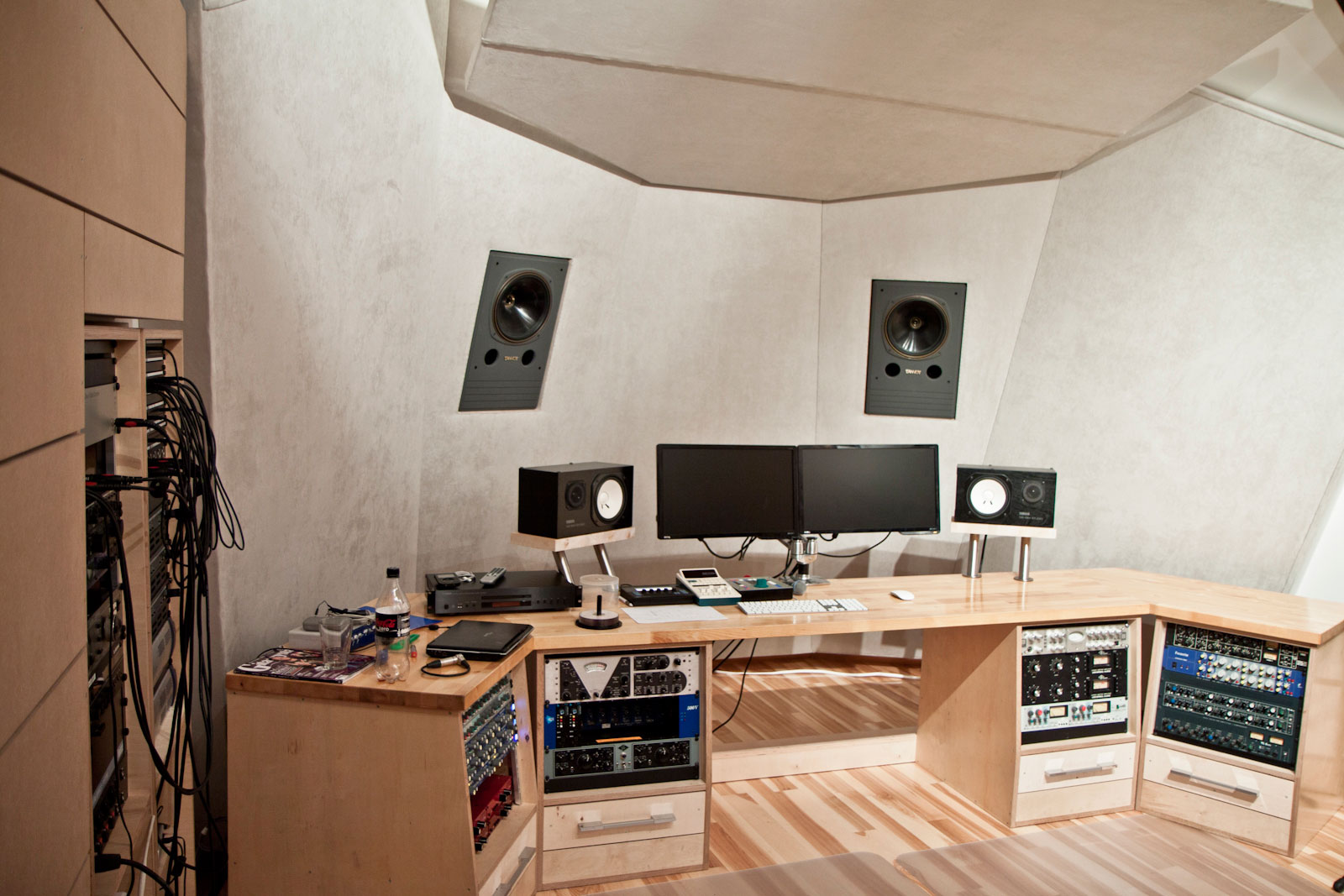Room acoustics for Łukasz Błasiński’s recording studio
Acoustical design work including studio room acoustics included:guidelines for electrical installations:
- noise control in studio rooms,
- computer modelling of room acoustics,
- development of acoustic structures,
- arrangement of acoustic systems in studio rooms.
We were invited to design the room acoustics for Łukasz Błasiński’s private studio. The studio consists of:
- recording room (cubature approx. 130 m3, usable area of 40 m2),
- sound directing room (cubature approx. 60 m3, usable area over 20 m2),
- corridor,
- toilet.
The corridor connecting the recording room with the control room additionally serves as an acoustic buffer.
The recording room was modified in relation to the original architectural design of the building in order to obtain proper acoustics.
In practice it came down to giving it the right proportions of size and usable area to ensure good comfort of work. Care was also taken to provide a comfortable control room with good interior acoustics located above the recording room.
The directing room made in lightweight plasterboard technology has the appropriate proportions of dimensions, and its shape provides the right distribution of reflections for undisturbed reception of sound image.
The appropriate acoustics in both rooms was ensured by the use of professional acoustic systems:
- on the ceiling in the recording room there are D7MF acoustic panels, i.e. sound dispersing systems in the medium frequency range,
- in the recording room the slotted ceilings were made with D7HF acoustic panels, dispersing the sound in the range of high tones,
- on the back wall of the control room there is a wideband diffusing system D7WB, which is a fractal diffuser (diffuser within a diffuser).
After all acoustic baffles were installed, acoustic measurements were taken.
As part of the room acoustics tuning procedure, it was decided to add more acoustic baffles placed on the ceiling of the recording room. Finally, the acoustic parameters were obtained according to the design assumptions.
The room acoustics allows for recording on the so-called hundredth notch and obtaining high-class recordings using only the appropriate microphone technique, without the need of additional processing of audio signals using e.g. plug-ins.









